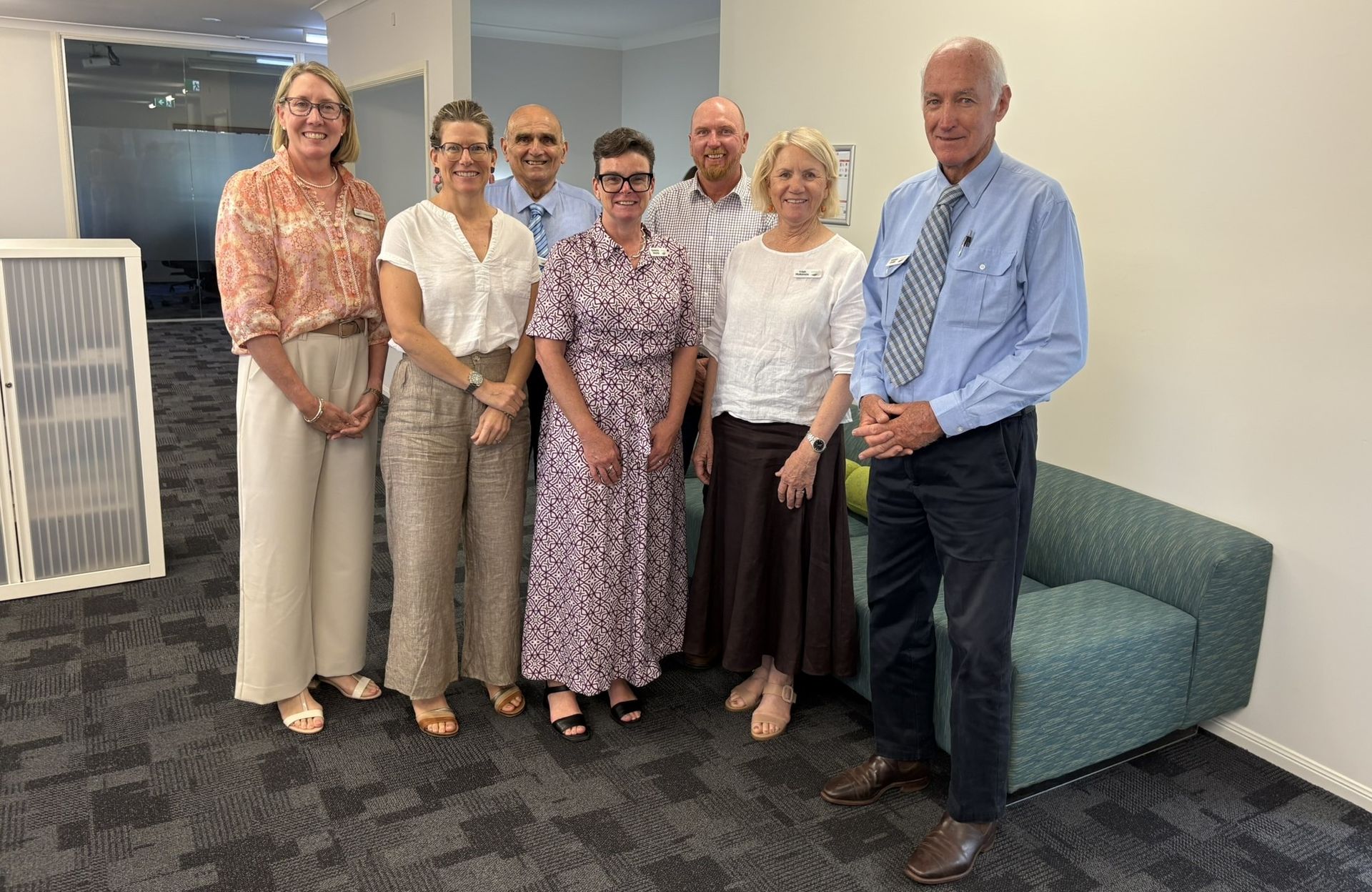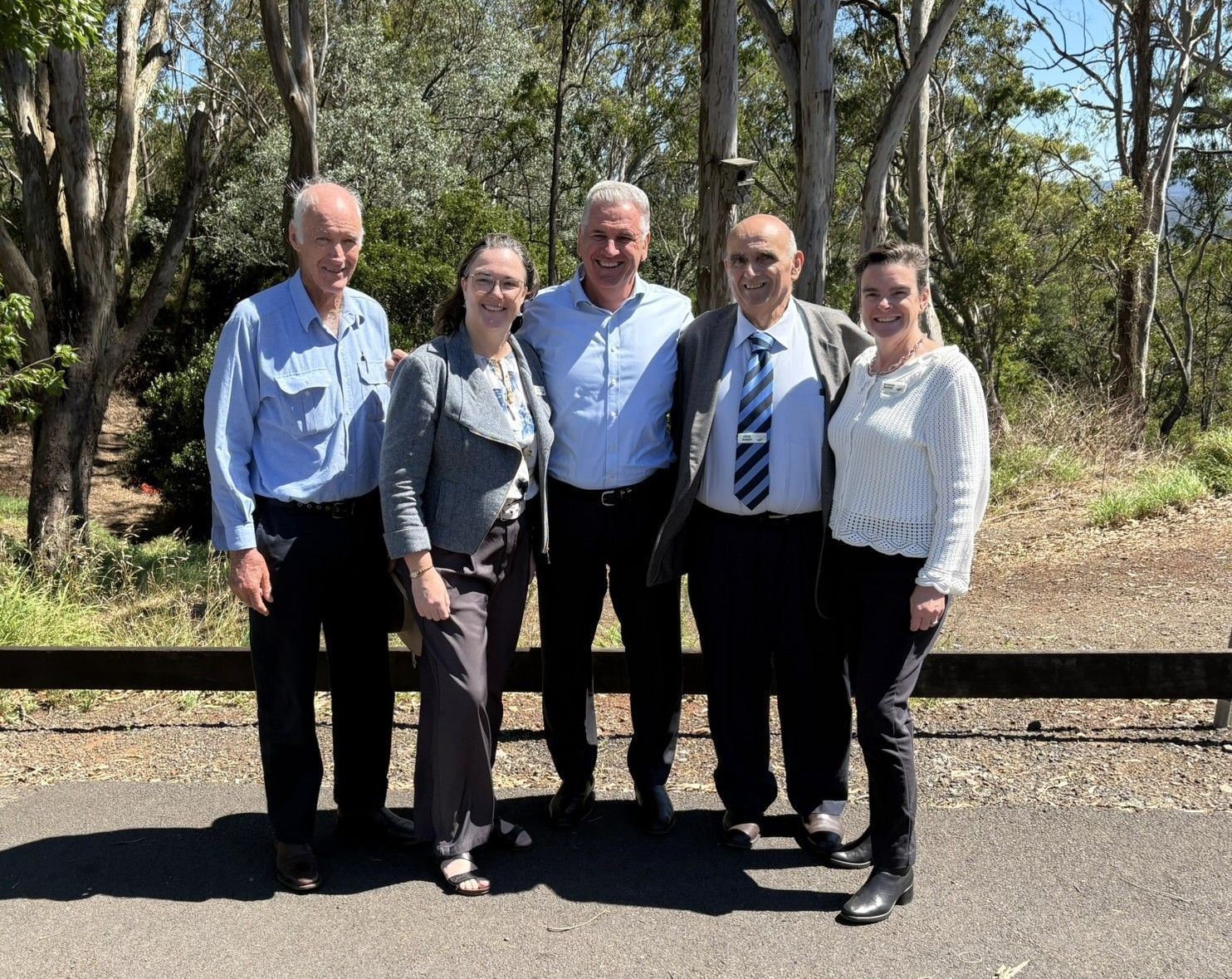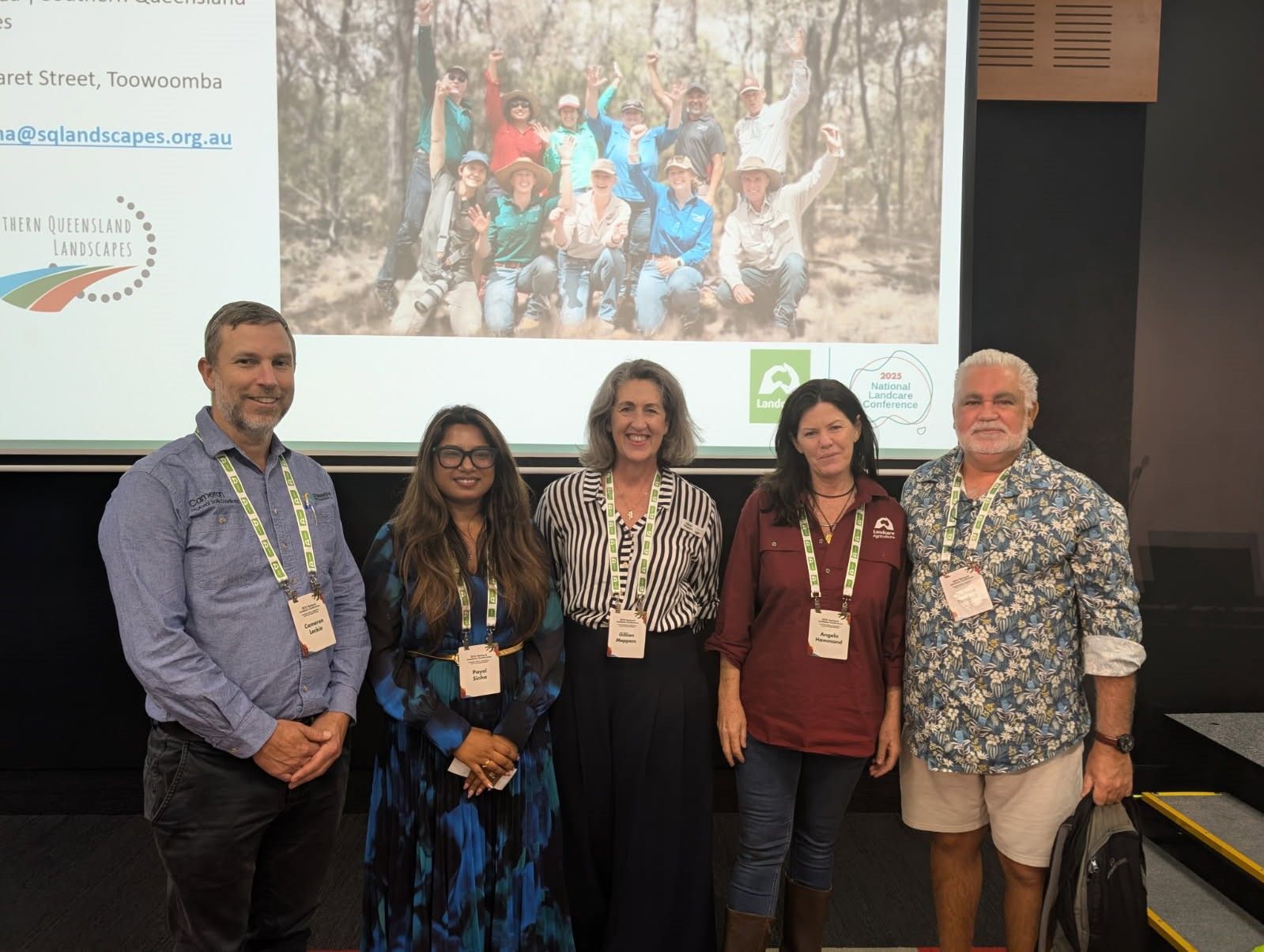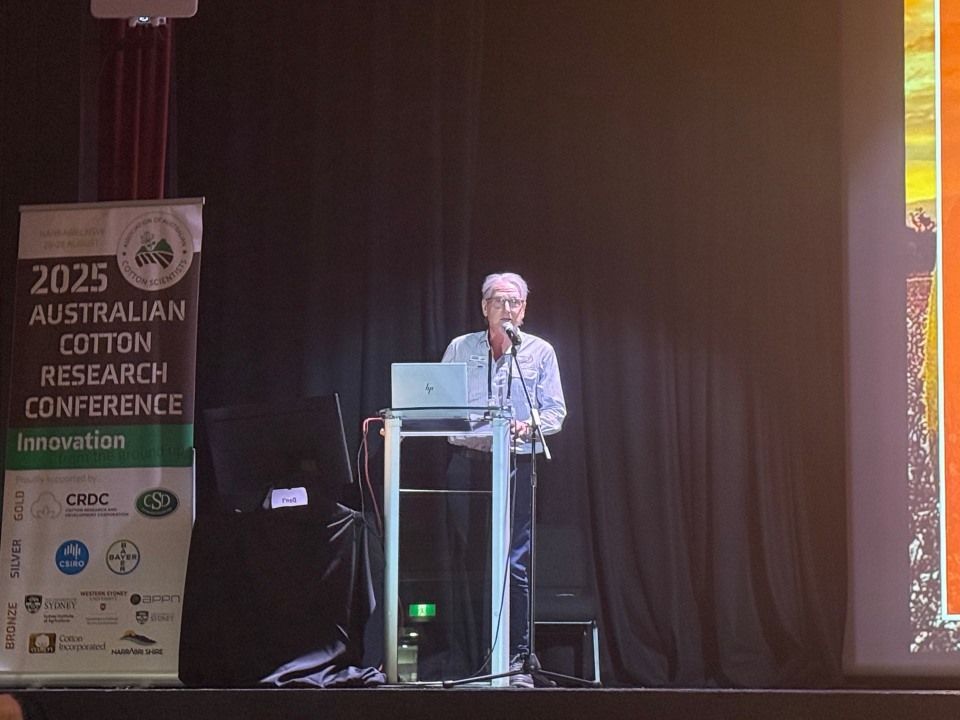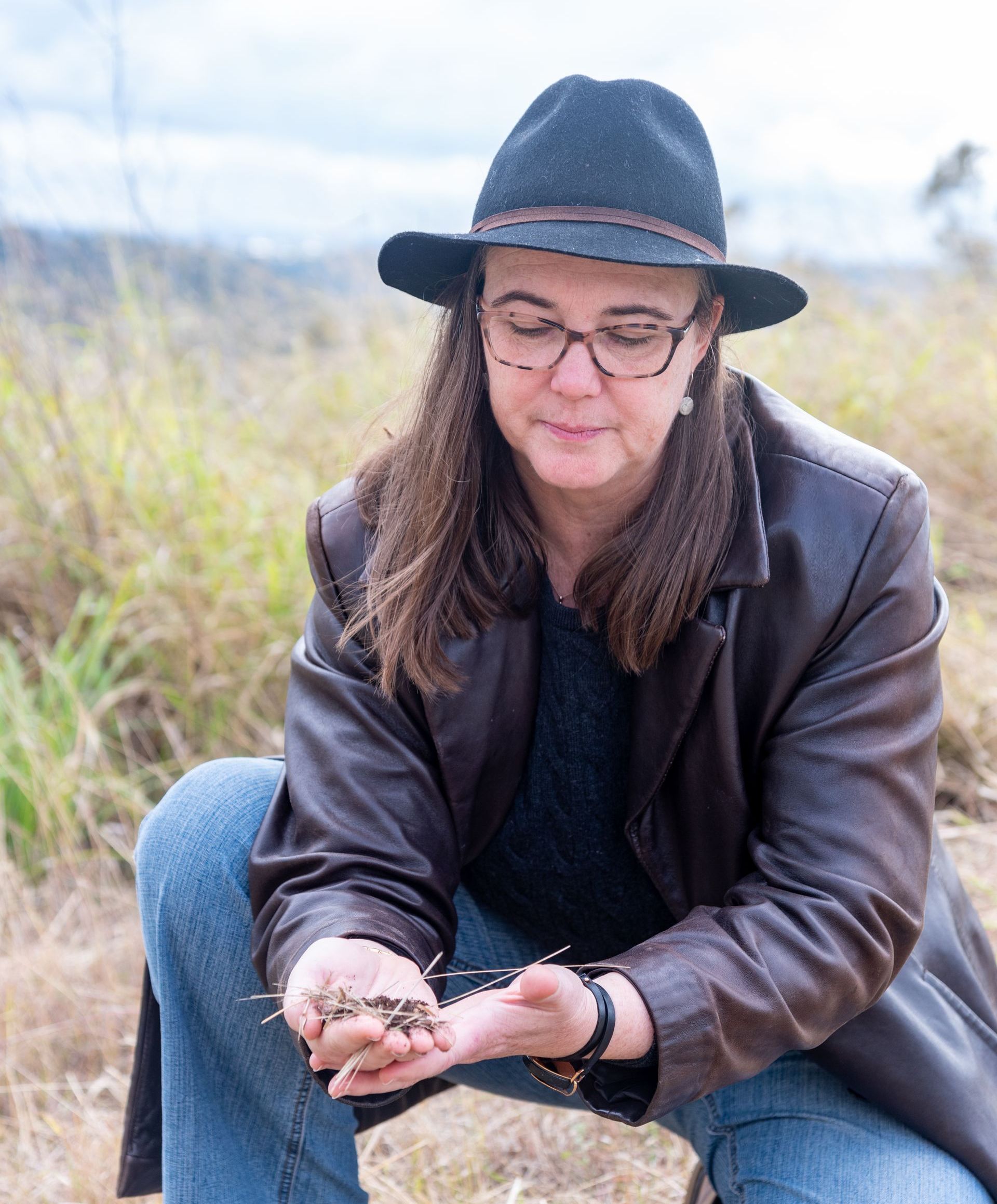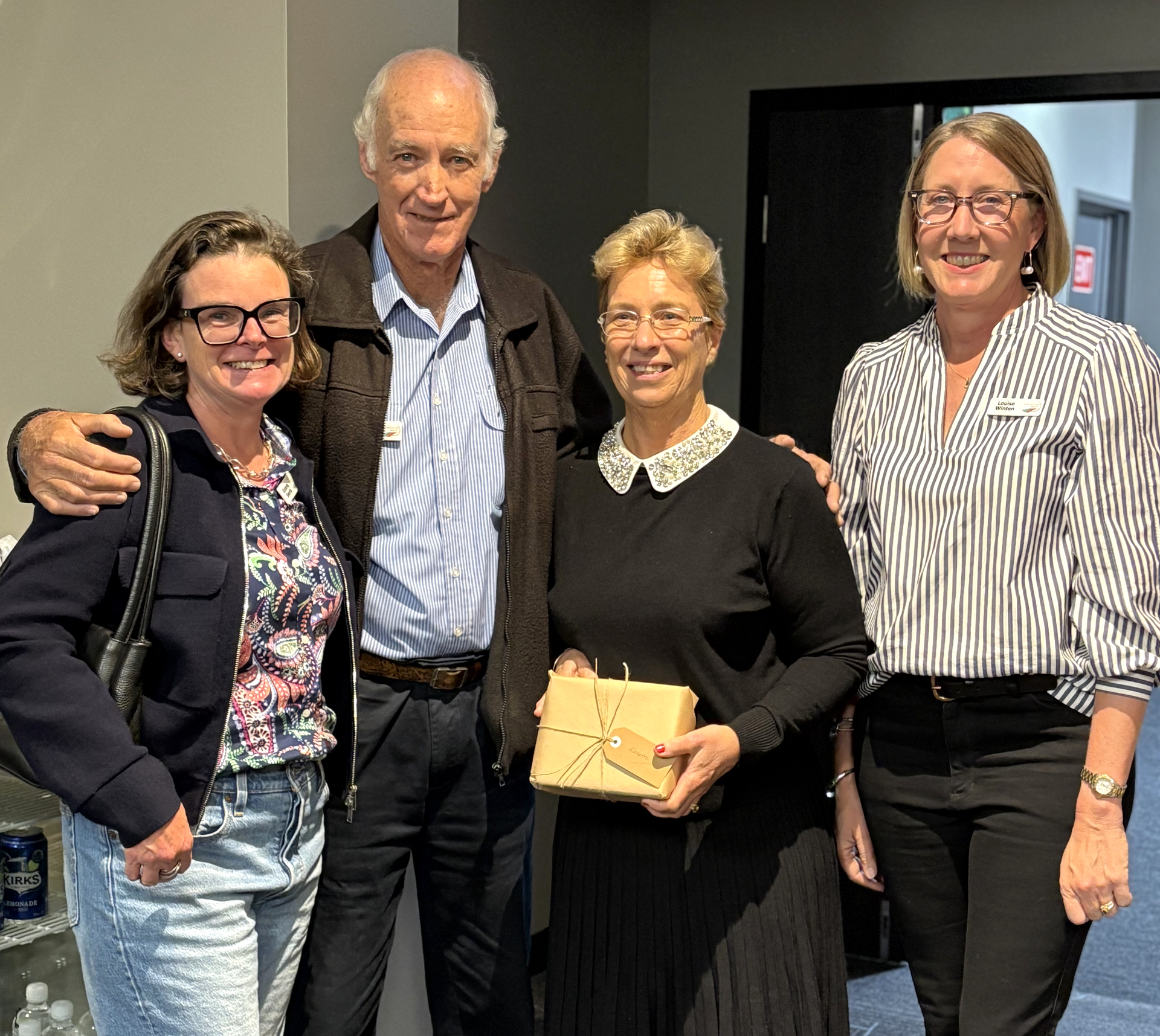In the midst of drought and part-way through reading his grandfather's memoirs, grazier David Curtis knew he had to take the fight out of farming.
The family have owned ‘Bellevue’, a mixed agricultural enterprise near Millmerran, since the early 90’s and while efforts to introduce regenerative agricultural techniques had been made, it wasn’t until three-years ago in the midst of one of the worst droughts in Australian history that David made the decision to jump in boots and all.
“That drought was really our reset; We were always thinking of new things to try, and I had been reading what my grandfather wrote about droughts in the 1900’s and it just really dawned on me how we were fighting the landscape and that we had to stop fighting it,” David Curtis said.
“Heading into that drought we were quite optimistic; but coming out the back end of it we really understood the importance of grass cover and found the perennials and native grasses, like Queensland Blue, were the most resilient,” Mr Curtis said.
“So since the drought has broken we have really been refocusing our operation on spreading water to capture and hold as much as possible on our land,” he said.
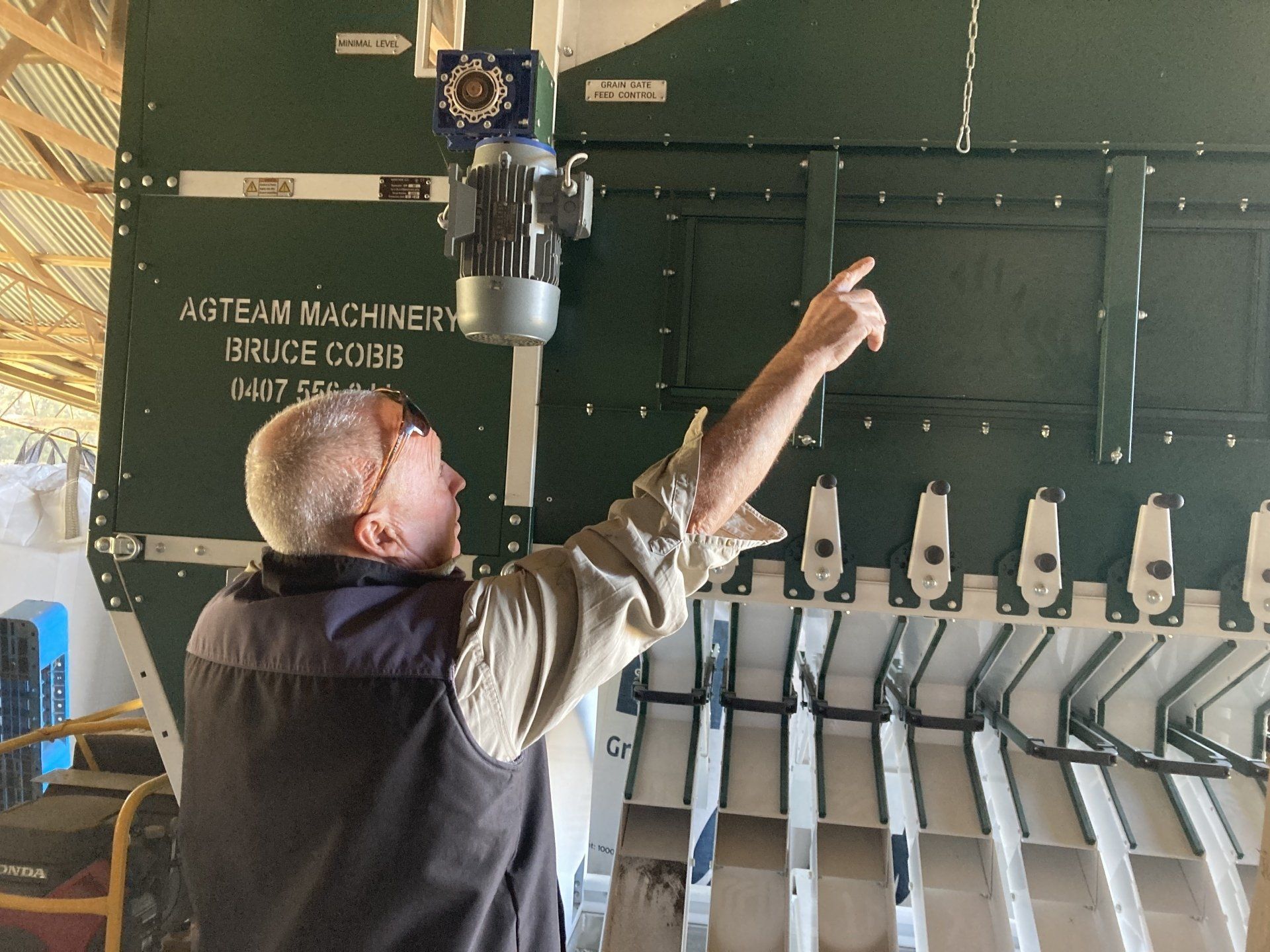
David Curtis has recently purchased a field seed cleaner which he can use to sort the different types of seed from his multi-species pastures for sale or to retain for his own enterprise.
Peter Andrews and his natural sequence farming techniques have been an inspiration to the changes on ‘Bellevue’.
“We’re using spreader ditches, rather than low profile contour banks to slow the flow but pretty much they operate in the same manner and this is really where we started to spread the water; and the landscape just sucked up the water from the moment they were put in place,” David Curtis said.
“It didn’t cost a lot of money, but the difference it made was huge, “ Mr Curtis said.
“We got a guy in with a laser bucket to get the levels perfect and a ditch just four to five metres long and 15cm deep could hold 1,000 litres of water every metre; and some of our ditches are a kilometre long so our capacity to hold water was massively improved,” Mr Curtis said.
By rehydrating the landscape you get the small water cycle working again which provides much needed moisture to establish ground cover and treelines for windbreaks.
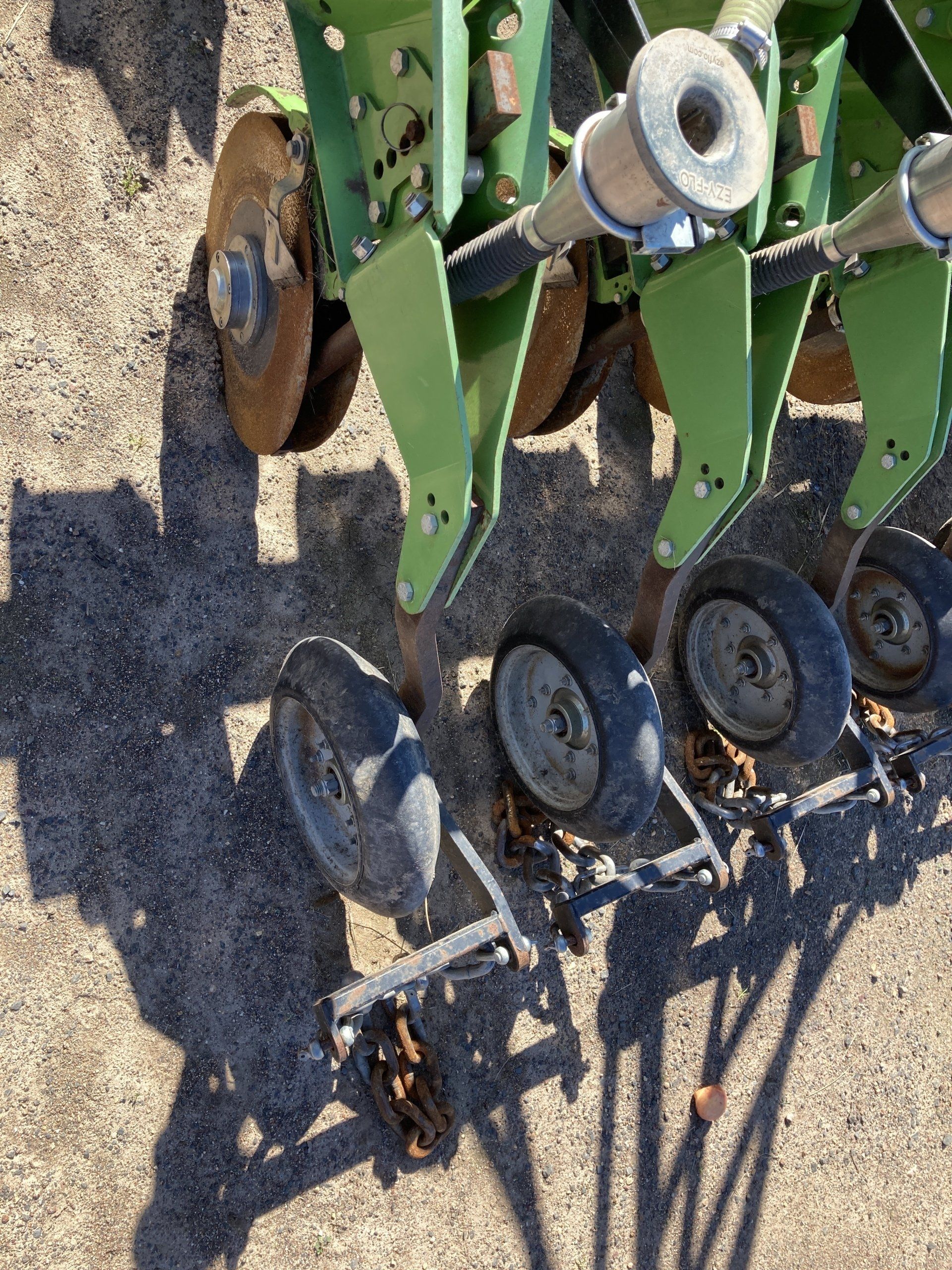
Organic fertiliser is incorporated into the seed mix and delivered through the air seeder during planting to minimise compaction and reduce fuel consumption.
“We’ve planted 15 kilometres of tree lines since 1992 and the plan is to continue doing that,” David Curtis said.
“More birds have returned here than ever before and the shade and cooling the trees provide for our sheep, especially in summer, is very important,” Mr Curtis said.
“Plus the trees bring back balance to the system; when the birds return if you have too many grasshoppers the birds are there to take care of that and so the system is not fighting itself, it's working in unison,” he said.
David describes his operation as an elevated pasture system enhancing pastures by direct drilling into existing grass stands.
“With all the rain we’ve had over the past 12 months we’ve gained soil, not lost it and the water is running clear, it’s not murky and full of sediment from top soil washing down the system,” David Curtis said.
“It’s amazing when you stop killing it or digging it up how quickly the landscape responds and it won’t take a lifetime to see the results, it happens so quickly,” Mr Curtis said.
“We’ve started planting barley and field peas together; the field peas provide nitrogen and then we harvest the barley to be used as organic feed for sheep that we can either sell, keep or reseed,” he said.
“We haven’t used urea or other artificial inputs for over 20 years now and the savings we’ve made through planting combinations that feed off each other has made a real impact to our bottom line.”

A Boss planter was modified to include a new coulter on the front followed by a double disc and seed press allowing the soil to be lightly tilled and the sealed to minimise moisture loss and seed predation.
Being a certified organic operation the ability to be able to apply organic fertilisers or composted manure was important to the sustainability of the operation.
“Yeah we’ve tried a couple of different options including Katec Fertiliser from Gympie, which has blood and bone in it, Terra Firma and more recently we’ve been using Grassdale Fertiliser’s Terrus which is a granulated carbon-based organic fertiliser,” David Curtis said.
“We’ve been planting out multi-species pastures that are organic, regenerative and include oats, barley, field peas, vetch, lucerne, progardes, medics, chicory and turnips,” Mr Curtis said.
“We’ve modified the Boss planter with new coulters on the front followed by double discs on the back which allows us to slightly open up the soil, place the seed along with the organic fertiliser into the soil and then close it all up again with a press wheel to reduce moisture loss,” he said.
“So we’re building organic matter, increasing our water holding capacity and building soil biology at the same time providing our livestock with a nutritious and organic mix of high quality feed to maximise weight gain and overall health.”
Watch the planting process at work at Belleview with this
video
Cell grazing during this year’s extreme wet has also proved advantageous to the operation.
“It’s made a hell of a difference being able to move the sheep on; where a lot of people have been dealing with worms in their sheep we’ve had little to no problems at all,” David Curtis said.
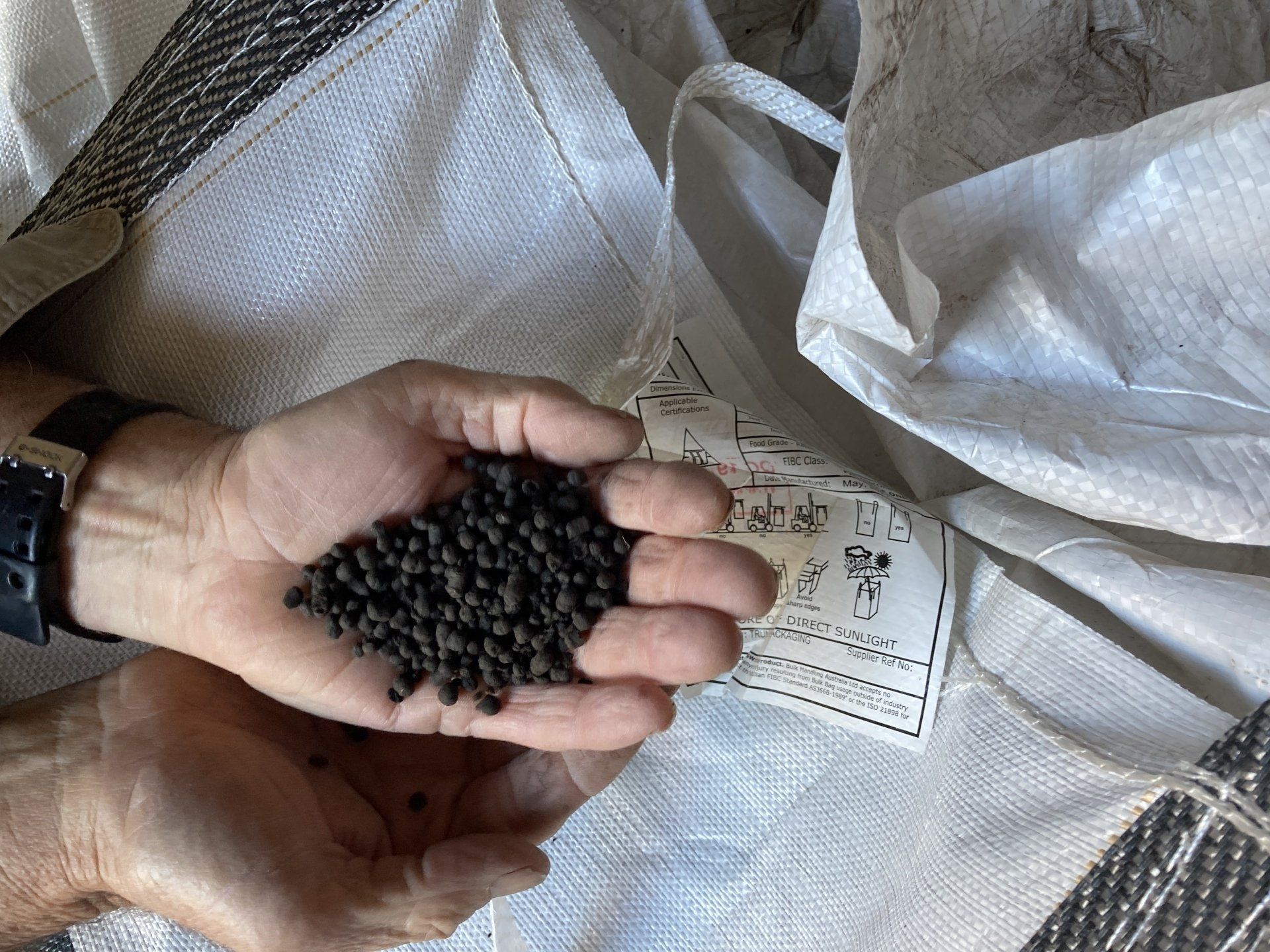
David Curtis is currently using an organic fertiliser Grassdale Fertilisers called Terrus which is a granulated carbon-based organic fertiliser which he said is easily applied at planting via his modified Boss planter.
“We had two mobs of sheep lambing during the wet; one mob was in a paddock that we could open and allow to move, the other was stuck in a paddock because of flooding and the one that was stuck in the paddock had high worm burden where the other didn’t,” Mr Curtis said.
“But I’m not as focussed on the worm counts, I’m more focussed on developing resistance and resilience in my mobs. If you look at our wild animals they can tolerate a high worm burden, but they’re not sick and unhealthy; so we don’t mollycoddle our animals because if a customer buys them to go out to say Charleville they need to be tough and resilient,” he said.
“We are breeding for enhanced resistance through selection, plus we put a lot of minerals out that the ewes can take up from their feed when it’s wet because the soil is in an anaerobic phase and retains all the minerals.”
“Ensuring the health and nutrition of our ewes, monitoring birth weights, selecting ewes for their birthing ability is all part of our success,” David Curtis said.
“We like medium framed rams at maturity to keep that birth weight between 3.5 and 4.5 kilograms and we are aiming for good robust lambs full of energy at birth,” Mr Curtis said.
Plus our sheep have Namibian genetics; and Namibia relies on just 4 inches of rainfall annually so genetically our sheep are tough and are equipped to flourish in dry conditions and extended droughts,” he said.
“With farming it's always a journey, you’ve never reached your destination and you’re constantly learning. But our land has bounced back so quickly with this wet period because we put in place the mechanics for it to be able to regenerate quickly during those drier times.”
For more information about David Curtis and Bellevue Dorpers
visit
For more information on Peter Andrews and natural sequence farming
click here
For more information on the Farm Owners Academy
visit
Grassdale Fertiliser - Terrus - Granulated carbon-based organic fertiliser
